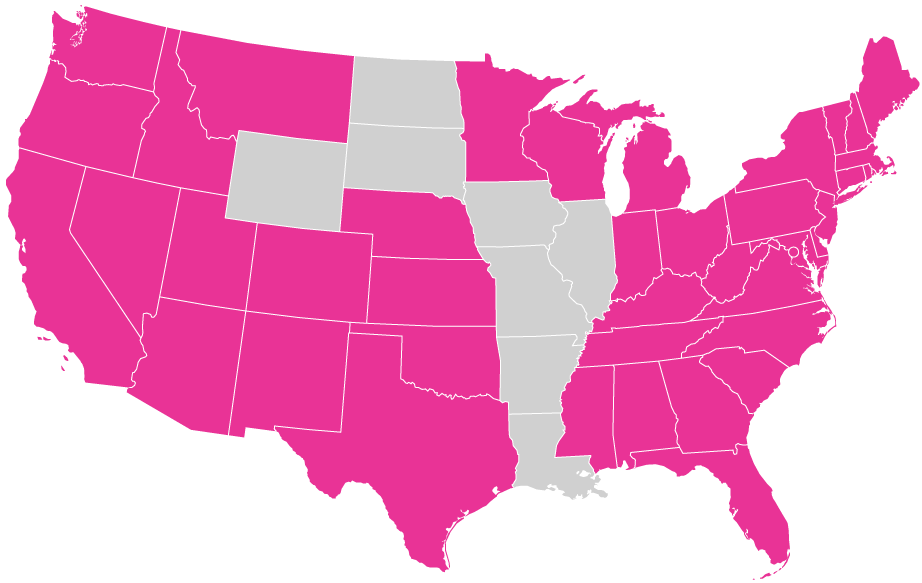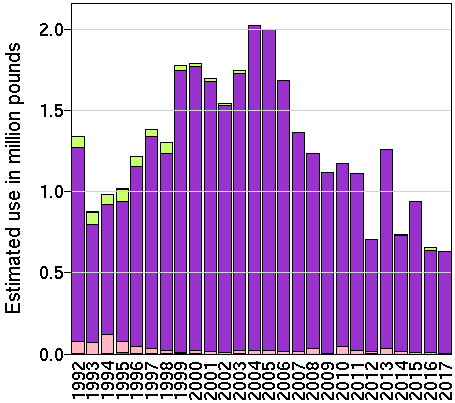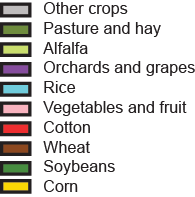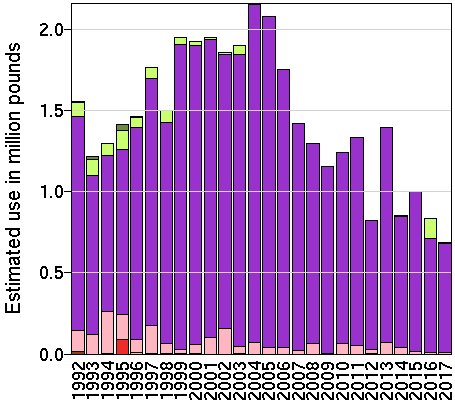Phosmet
fosz-met
Primarily used on orchards and grapes. Registered for use on pick-your-own farms. Registered as a U.S. pesticide in 1988. Reregistered in 2006. Currently under registration review.
Overview
Phosmet is used in 40 states.

Phorate is used in Alabama, Arizona, California, Colorado, Connecticut, Delaware, Florida, Georgia, Idaho, Indiana, Kansas, Kentucky, Maine, Maryland, Massachusetts, Michigan, Minnesota, Mississippi, Montana, Nebraska, Nevada, New Hampshire, New Jersey, New Mexico, New York, North Carolina, Ohio, Oklahoma, Oregon, Pennsylvania, Rhode Island, South Carolina, Tennessee, Texas, Utah, Vermont, Virginia, Washington, West Virginia, and Wisconsin.
Data is not available for Alaska, D.C., Hawaiʻi, and U.S. Territories. Data represents the most recent year available from USGS. Details.
See detailed maps of phosmet usage by state and county.
Human Health Effects
Even at low levels of exposure, phosmet can lead to serious negative health effects.
Cancer
Neurodevelopmental Harm
Reproductive Toxicity
High Risk Exposure Routes
People are exposed to phosmet through food and drinking water, even if they don’t live near areas where pesticides are sprayed. Details.
Food and/or Drinking Water
FarmworkersPeople performing post-application activities in previously treated fields, but do not directly apply pesticides themselves. Details.
Pesticide HandlersPeople involved in pesticide application process. Details.
ResidentialExposure through post-application from pick-your-own farms.
Residential BystanderPeople who live near areas where pesticides are applied. Details.
Spray Drift
Percentage of Crops
Phosmet is applied on food widely grown and consumed in the United States.
Peaches (55%)
Nectarines (50%)
Apple (40%)
Blueberries (40%)
Pears (40%)
Cherries (30%)
Oranges (25%)
Registered Uses
Where EPA allows phosmet to be used.
Agricultural Crops: alfalfa, fruit and vegetables, orchards and grapes
Livestock
Pick-Your-Own Farm Fruits and Orchards
Additional Information
Estimated Use of Phosmet on Crops
Most recent agricultural crop usage data as provided by the U.S. Geographical Survey’s Pesticide National Synthesis Project. Does not reflect universal usage of phosmet. (How do EPest-low and EPest-high differ?)
U.S. Tolerances Categories & Commodities for Phosmet
The U.S. EPA sets maximum residue limits — known as “tolerances” — on the amount of phosmet that may remain in and on foods. The tolerance is the residue level that triggers enforcement actions.
Tolerances have been set for phosmet for: Agricultural Commodities and Milk Eggs Meat and/or Poultry. Maximum residue limits have been set for phosmet by the U.S. EPA for the following commodities:
Almond
Apple
Blueberry
Cattle
Citrus
Crabapple
Cranberry
Goat
Hog
Horse
Kiwifruit
Milk
Pea
Peach
Pear
Pistachio
Potato
Sheep
Sweet Potato
Tree nuts
U.S. EPA Human Health Risk Assessments for Phorate
Human Health Risk Assessments are conducted by the U.S. EPA to estimate the nature and probability of harmful health effects in people who may be exposed to pesticide. They are used to make informed decisions about approving new pesticides and new uses of registered pesticides, and during our regular review of existing pesticides. Read the assessment for phosmet.


